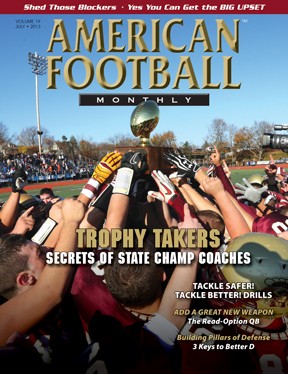Article CategoriesAFM Magazine
|
AFM Subs Ask With Curtis Tsuruda Strength and Conditioning Coach • East St. John High School (LA)© More from this issueCoach Curtis Tsuruda, has over 30 years of experience as a strength and conditioning coach. He has worked at Tulane, LSU, Hawaii, and Mississippi State and is currently the strength and conditioning coach at East St. John High School in Reserve, Louisiana. He was featured in AFM Subscribers Ask in May and now responds to more of your questions. What methods do you use to train young high school athletes to successfully rack the bar on the power clean? How many days do you feel your athletes should lift in season? What days did you lift and what are the most beneficial lifts for high school players? Bill Cretaro, Offensive Coordinator, Chittenago High School (NY). ....The full article can only be seen by subscribers.
|
|
|||||||
| HOME |
MAGAZINE |
SUBSCRIBE | ONLINE COLUMNISTS | COACHING VIDEOS |
Copyright 2025, AmericanFootballMonthly.com
All Rights Reserved





